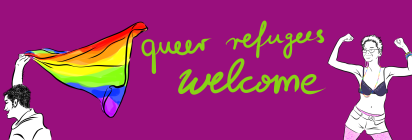What is discrimination?

Discrimination is an unjustified disadvantage of persons or groups due to certain characteristics. These characteristics can be, for example: age, ethnicity, disability or even social conditions, religion or sexual orientation. Discrimination is prohibited by law and you can defend yourself against it.
The categorization of people into respective groups happens from the outside, by privileged parts of society. These hierarchical power structures, by which people are devalued, express themselves interpersonally, but also on an institutional and cultural level.
Structural discrimination means that the devaluation of discriminated people happens on all levels of coexistence at the same time: in personal attitudes, in language and also in schools, hospitals, authorities or through the representation in media.
An example of institutional discrimination against queer people is the restrictions on blood donation. Queer people are blanketly assumed by health institutions to have increased sexual risk behaviour. This is stigmatizing and discriminatory.
Structural discrimination against refugees is, for example, no access or more difficult access to health care. Often, refugees also experience discriminatory incidents when visiting authorities and offices.
